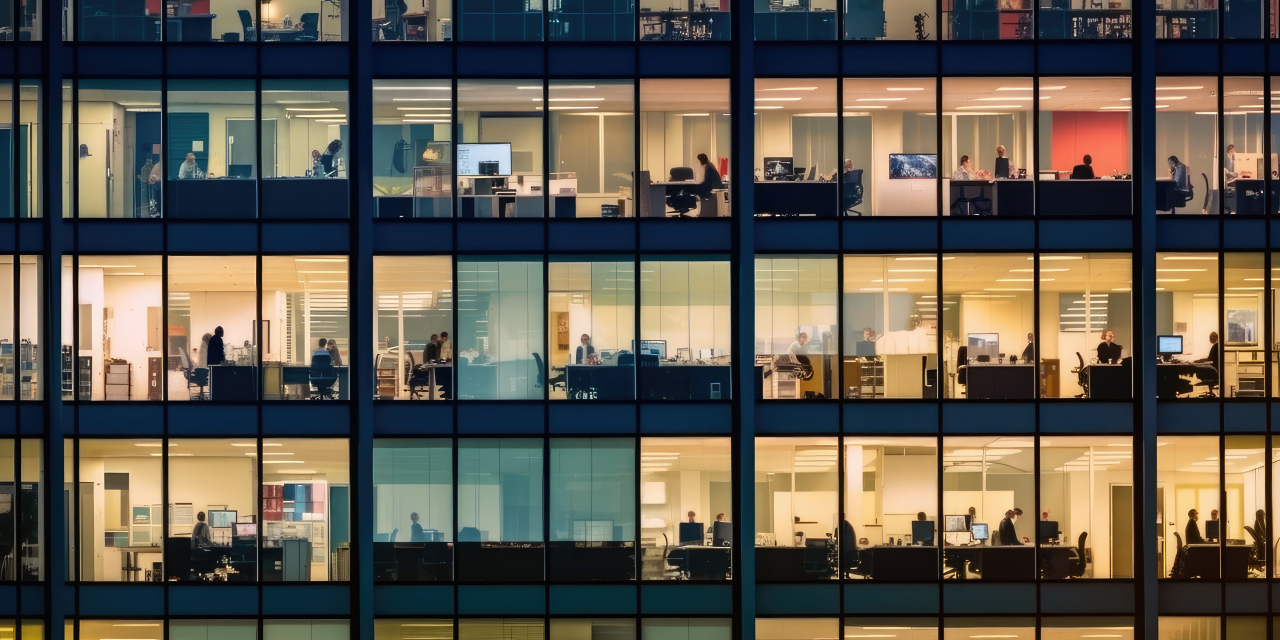 |
Seoul's office real estate market remains robust following low vacancy rate and tight supply. The vacancy rate of office buildings in the city stood at 2.2 percent in the second quarter of this year. (123rf) |
An “office real estate apocalypse” looms in major global cities amid high-flying interest rates and the expansion of remote work during the pandemic. But one market that still remains robust is Seoul, leading investors to explore investment opportunities here, according to industry officials at home and abroad.
Investors agree that Seoul’s office market is priced high, but they add that multiple factors such as the low vacancy rate and tight supply can offset the pricing.
Bucking global remote work trend
The vacancy rate of office buildings in Seoul stood at 2.2 percent in the second quarter of the year, far below what sources in the local real estate industry call the “natural” vacancy rate of 5 percent.
It is widely accepted that 5 percent of office space can be vacant depending on the balance of supply and demand. If the vacancy rate of a building falls below 5 percent, that building is considered “packed.”
A vacancy rate in the 2 percent range stands out when compared to other major cities -- 31.6 percent in San Francisco, 16 percent in Manhattan and 9.4 percent in London -- during the same period.
“While the demand for office space slowed globally after the pandemic, Korea was one of the few countries that showed a strong preference for returning to the office,” said David Yu, head of the research and strategy division at Mastern Investment Management.
“Rather, in Korea, the increasing number of office workers is elevating the demand for larger floor space, boosting the office rental market overall,” he said.
Despite growing demand, supply remains tight in Korea. According to estimates by Mastern, an annual average of 926,522 square meters in office space is estimated to have been supplied in the greater Seoul area between 2018 and 2023. The figure is the lowest for the previous two decades, when more than 1 million square meters of office space was added each year.
Foreign investor interest piqued
These factors have made Seoul a lucrative destination for real estate investors. In the second quarter alone, office deals worth a combined $3.8 billion were made in Korea, making up 12 percent of the total globally, according to analysis by market tracker MSCI Real Assets.
“Seoul’s share of office investment shooting up in Q2 and Q3 is as much about the rapid fall in office investment appetite across the rest of the globe, as it is about the Korean market specifically,” said Benjamin Chow, head of Asia real estate research at MSCI Real Assets, projecting the outlook to depend on how much work-from-home and hybrid work practices settle in here.
Office investment deals in Seoul are usually made centering on three key areas: the Central Business District (CBD), the Gangnam Business District (GBD) and the Yeouido Business District (YBD).
More recently, the Pangyo area, south of Gangnam, is emerging as a new business district, called the Bundang Business District (BBD), as it is home to many big-name local tech firms, including Naver and Kakao. The area is notable for its accessibility to southern Seoul and its capacity for larger floor space.
“As for Pangyo specifically, there have been a number of big deals,” said Chow, citing recent deals involving Mastern, Samsung SRA and Singapore’s GIC.
“Given the relatively low vacancy across the whole of Seoul, and the fact that Pangyo has been increasingly accepted as a market that can attract tech workers, it is not a surprise that foreign investors have been interested in the market as well,” he added.
GIC’s purchase of Pangyo Tech One Tower in the BBD was one of the largest deals made this year. The state fund acquired a 45.08 percent stake in the property for 350 billion won ($265.6 million) from Naver. The property was valued at 800 billion won, 10 percent higher than its previous valuation.
Another global investment firm, KKR, acquired Namsan Green Building in the CBD in a consortium for an undisclosed amount. Its key tenants include SK Broadband, an internet service firm affiliated with SK Telecom.
Across the districts, the vacancy rate for the BBD in the first quarter stood at 1.7 percent, slightly higher than the 1.5 percent for both the GBD and YBD. In the meantime, the CBD showed the highest vacancy rate of 3.3 percent.
High prices, China ripple effect risks
As for the market’s outlook, experts pinpointed price as the key factor.
“Seoul’s office market is high-priced. Foreign investors are interested in investing in the market, but the price is an issue. They seem to be waiting for an adjustment,” said Jie So-rim, director of the capital markets group at Cushman & Wakefield.
China’s real estate crisis is also stoking fears among investors here even though the financial authorities downplayed the possibility of a serious impact. According to the Financial Services Commission, Korea’s banks and insurers have some 400 billion won exposed to China’s real estate market.
“Unlike the market for manufactured goods, China’s financial market is a closed market. It would have a limited impact on the global market, including Korea,” an official from a local real estate investment firm said on condition of anonymity.
Lee Kyung-ja, an analyst at Samsung Securities, echoed the view, but remained cautious about the possible ripple effect from China’s sluggish economy.
“If the real estate crisis (in China) continues, that will affect the Korean economy and its commercial real estate market negatively,” she said.







